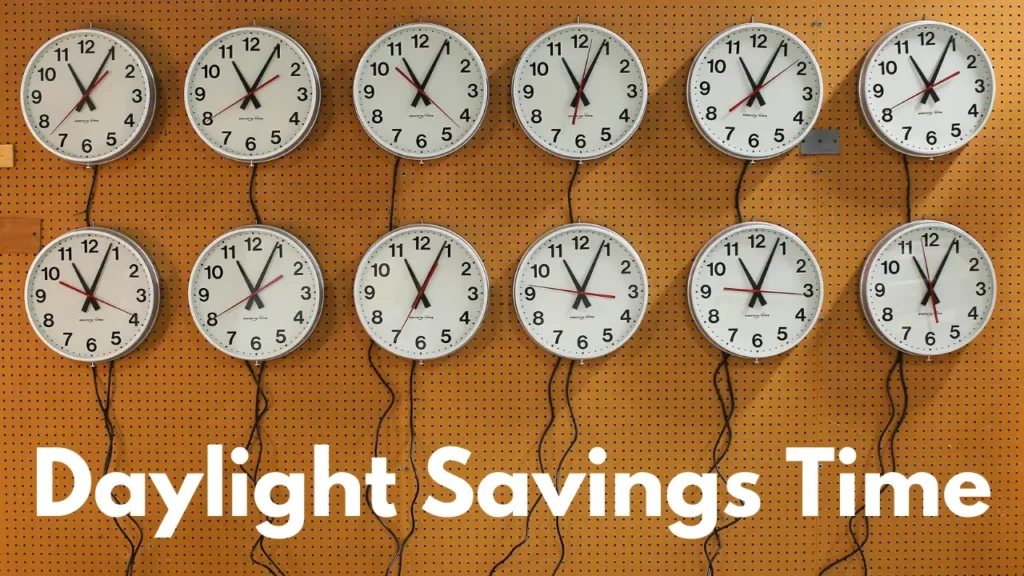Daylight Savings Time (DST) is a long-standing practice aimed at making better use of daylight during the warmer months. Each year, people across many regions adjust their clocks twice to adapt to the time change, one in spring and the other in fall. In this article, we cover all you need to know about daylight savings time, the exact dates for daylight savings 2024, and what the fall back means this year.
What Is Daylight Savings Time?
Daylight Savings Time is the practice of setting clocks forward by one hour in the spring to enjoy longer dst in the evenings. This process is commonly known as “spring forward.” In the fall, clocks are set back by one hour, allowing people to experience more daylight in the morning during the colder months, a shift known as “fall back.”
When Is Daylight Savings Time 2024?
In 2024, Day light Savings Time officially begins on Sunday, March 10, at 2:00 a.m. At that time, clocks “spring forward” one hour, marking the start of extended evening daylight. The time change in 2024 will end on Sunday, November 3, at 2:00 a.m. when we “fall back” and turn the clocks back one hour.
For those wondering, “When does the time change?” or “What time does the time change?” the answer is 2:00 a.m. local time on the respective dates each year.
Why Do We Have Daylight Savings Time?
The initial concept of daylight saving was to reduce the need for artificial lighting by extending evening daylight during the spring and summer months. By shifting the clocks forward, people can make better use of natural light in the evening hours, potentially reducing energy costs.

How Does the Time Change Affect Us?
The time change affects both sleep patterns and daily routines, as our internal clocks take some time to adjust. Studies show that when clocks go back in the fall, people experience a temporary improvement in sleep due to the extra hour gained. However, the spring clock change often leads to a slight loss of sleep as we set the clocks forward.
Daylight Savings Time and Health
Each time change disrupts our circadian rhythms, which can lead to increased fatigue, changes in mood, and even potential health risks for those sensitive to sleep disruptions. The fall back time change is often viewed as less disruptive since it provides an “extra” hour of sleep, which many look forward to in the daylight savings time fall 2024 period.
Do We Get an Extra Hour of Sleep Tonight?
The question “Do we get an extra hour of sleep tonight?” applies when we transition from Daylight Savings Time to Standard Time in the fall. For fall back 2024, which occurs on November 3, 2024, we will indeed gain an extra hour, as the clocks shift back. So, if you’re wondering “Is daylight savings tonight?” this year’s date to keep in mind is the first Sunday of November.
Frequently Asked Questions About Daylight Savings Time
Ans: Daylight Savings Time starts on March 10, 2024, and ends on November 3, 2024.
Ans: If it’s the night before March 10 or November 3 in 2024, then yes, there will be a time change that night.
Ans: During the fall back time change on November 3, we gain an hour, giving people an extra hour of sleep.
Ans: The time change occurs at 2:00 a.m. on the designated dates in both spring and fall.
History of Daylight Saving Time
Daylight Savings was first proposed in the late 1800s, though it wasn’t until World War I that many countries implemented it to conserve fuel. Today, many regions around the world follow DST schedules, though some areas opt out. The United States, most of Europe, and Canada observe daylight savings, while many Asian and African countries do not.
How to Prepare for the Hour Change in 2024
Preparing for the hour change 2024 is essential for a smooth adjustment. Here are some tips:
- Adjust Sleep Gradually: In the days leading up to time change 2024, go to bed and wake up 15–30 minutes earlier or later, depending on the direction of the time change.
- Get Morning Light Exposure: Light exposure in the morning can help reset your circadian rhythm and make the transition easier.
- Limit Screen Time Before Bed: Reducing exposure to screens can help your body adjust more smoothly to the new schedule.
Will Daylight Savings Time Continue?
There have been discussions on whether to make daylight saving permanent. Legislation in several U.S. states and debates in Congress have considered eliminating the clock change twice a year, but no national changes have been implemented as of 2024. Until then, the daylight savings clocks will continue to change each spring and fall.
Key Dates for Daylight Saving in 2024
- March 10, 2024: Start of Daylight Savings Time (Spring Forward)
- November 3, 2024: End of Daylight Savings Time (Fall Back)
Final Thoughts on Daylight Savings Time 2024
While the winter time change and daylight savings clocks are well-known, there remains a variety of opinions on whether it’s beneficial. As we approach daylight savings time 2024, remember the key dates, plan for a smooth transition, and enjoy the extra hour change 2024!
Whether you’re asking, “Is daylight savings tonight?” or simply wondering how to prepare for the day light savings end 2024, this article covers everything you need to know for a seamless transition this year.